24 Sep 2021
0 CommentsA Personal Carbon Reduction Plan
Today is a Global Climate Strike in cities and towns all over the world. In late 2019, was a crescendo of activity including the first Global Climate Strike and UN Climate Summit. It feels almost like time, and action, has been paused by the COVID-19 pandemic. Now in late 2021 marks a return to that pivotal time. With a summer of extreme weather events including the most wildfires ever globally, we are entering a cycle including COP26 in Glasgow. And, for those of us who are boomers, the fact that these climate strikes are led by our youth and children, should add poignancy to the state of the world we have bequeathed the next generation.
As a society and as thoughtful citizens, how can we respond? Thinking beyond surviving the worst pandemic the rich world has experienced in our lifetimes, this is the perfect time to set priorities and make life plans and we must include addressing the greatest existential crisis challenging humanity and the world we live in.
Everywhere the sense of urgency has increased. Scientific models show that the amount of carbon we can pump into the atmosphere must be limited if we are to keep to an increase of between 1.5°C to 2.0°C, which already will be a much changed earth. This remaining capacity to emit carbon, also known as our Carbon Budget, is shrinking rapidly. Hence, each year that passes, such as between 2019 and now, means that living within this carbon budget requires more drastic action and at a much faster pace.
I strongly encourage everyone to take their own personal actions. They are so important to signal to others that the Climate Crisis is serious and to help mobilize action.
Systems Change
Personal actions will never be sufficient. We also need local, regional, country-wide and global systems change to accompany our personal actions. This might be described as re-jigging our long held systems of regulation, taxation and even the incentives in our market economy. In effect, we may be re-writing the rules of capitalism itself. Examples of this include:
- Setting a sufficiently meaningful price on carbon to give monetary incentives that nudge business and personal decisions and purchases toward a carbon neutral world.
- Ensuring that this carbon price is revenue neutral and doesn’t fall unduly on the less wealthy portions of society.
- To ensure that carbon pricing is fair to local industry, a key measure needs to be adopted. Border Carbon Adjustments ensure that the product, say, manufactured in China with coal fired electricity and inefficiently shipped, has a much higher price because of all that carbon used.
- Completely removing existing fossil fuel subsidies which the IMF estimates to be an incredible US$4.7 Trillion globally or 6.3% of GDP. Even more surprising, they continue to grow. In Canada, our fossil fuel subsidies grew to CAD$18 billion in 2020. These subsidies are perverse, acting like a reverse carbon price, often nullifying the other actions taken.
- Related to fossil fuel subsidies, we need to pressure financial institutions to stop financing the fossil fuel industry. In Canada alone, our big 5 banks financed an incredible CAD$137 billion in 2020, a figure that grew 50% over 2019.
We must keep up the pressure on our elected officials of all political stripes. While we are doing this, here are my thoughts on personal actions we can take. Its a complex topic, but by breaking into down into more digestible chunks, a seemingly intractable problem moves closer to solution. Here are the major categories I use, and note that I will provide further commentary on each in following posts:
Residential
 Being a northern nation with really cold winters, means that our homes consume a lot of energy which can be between 20- 25% of our personal carbon footprints. In most of Canada, it takes a lot of energy for home heating as well as cooling and domestic hot water. We also use loads of energy for cooking, laundry, home entertainment, lighting and more.
Being a northern nation with really cold winters, means that our homes consume a lot of energy which can be between 20- 25% of our personal carbon footprints. In most of Canada, it takes a lot of energy for home heating as well as cooling and domestic hot water. We also use loads of energy for cooking, laundry, home entertainment, lighting and more.
While we can, and should, reduce our energy and electrical load through active management of our device choices and lifestyle, the biggest gains come from making our homes inherently more efficient.
I am currently designing and building such a sustainable, carbon zero (or negative) home in part to show a direction for the coming years. I hope that this will lead to real insights to help future homes be more sustainable, even the average house.
Of course, most homes aren’t new but have been around for 20, 30, 50 or even over 100 years. Retrofits of those homes are an important part of the mix. Audits against the Energuide for Houses standard help determine both your home’s energy rating, but to help define a path forward. Combing this with systems change, through financing or even property tax abatement to encourage this trend, is clearly the way forward. Systems change that encourages individual action is key. Even the august Conference Board of Canada has published a policy recommendation Green Homes: Sustainable Finance for Residential Retrofits. We can only hope that the appropriate levels of government are spurred into action.
Transportation
Personal transportation may represent over 30% of our personal carbon footprint. Note that I am, somewhat arbitrarily assigning logistics and freight to produce and deliver goods to us into the personal Consumption category below. While we can work to reduce our footprints by living in compact cities with lots of walking and bicycling, this does not work for all. The largest component is the electrification of transportation represented by the acceleration of the move from legacy ICE (Internal Combustion Engine) vehicles to EVs (Electric Vehicles). We are also starting to see this trend in small trucks and eventually event transport trucks. Beyond cars, I make several suggestions:
- Public Transit – try to take public transit as much as possible to reduce congestion, whether streetcars (trams), buses, subways or commuter trains. Beyond the reduced footprint from shared vehicles (sort of like a giant carpool) most of these modes of transportation are electric or moving in that direction.
- Commercial Aviation – This is a key target of activists like Greta Thunberg who refuse to fly (see ‘flygskam‘) there is no question that flying is a growing source of personal carbon footprint. Consider reducing your use of flying, and for those trips you must take, you are strongly encouraged to purchase carbon offsets (see below).
- Taxis and Carsharing – Again, you are strongly encouraged to purchase Carbon Offsets for the kilometres you travel in taxis. Until the pandemic, Lyft (and not Uber) purchased carbon offsets automatically. Although that has been cut, they are committed to more EVs and even have ‘Green Mode’ in some cities which are electric vehicles. You wise choices do make a difference.
- Carbon Offsets – There are many carbon footprint calculators you can use, for example to offset air travel or other transportation. As I shifted from ICE to EV vehicles, the amount I have to offset is reduced. A good place to start is Carbon Zero and I would recommend choosing local projects that you can better understand when you purchase offsets. And perhaps tell others via social media what you are doing to help educate more people. Another more grassroots approach is to support the urban forest, which is a great carbon sink. Check out Tree Trust which is available in an increasing number of Ontario communities.
Consumption

Another aspect to consumption is excess packaging, much of which is made from plastics. Plastics pose enormous problems to our biosphere and in particular the oceans and so reducing or eliminating single use plastics is an urgent need. Further, most plastics are made from oil and hence are another form of fossil fuel consumption. I will soon write a ‘top 10’ list for ways to reduce your personal plastic and packaging footprint – which directly reduces your carbon footprint.
I hope that this provides a high level roadmap to both personal action, but also where public policy needs to go. Of course, it over simplifies a fiendishly complicated topic. At the same time, by dissecting de-carbonization I can only hope that it inspires action, at both a personal and government level.
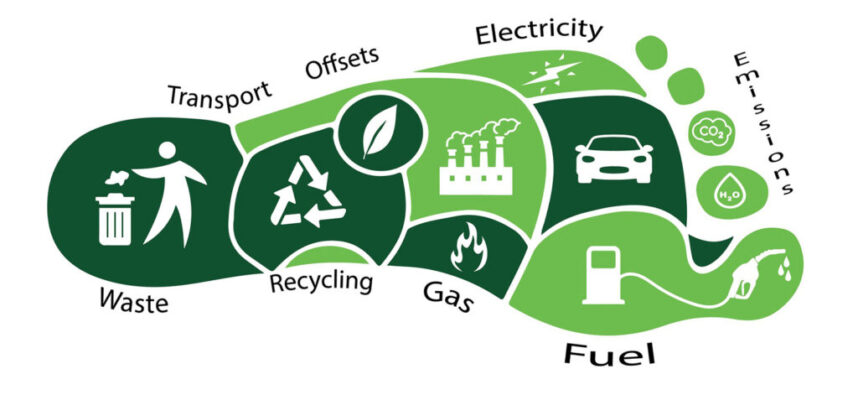
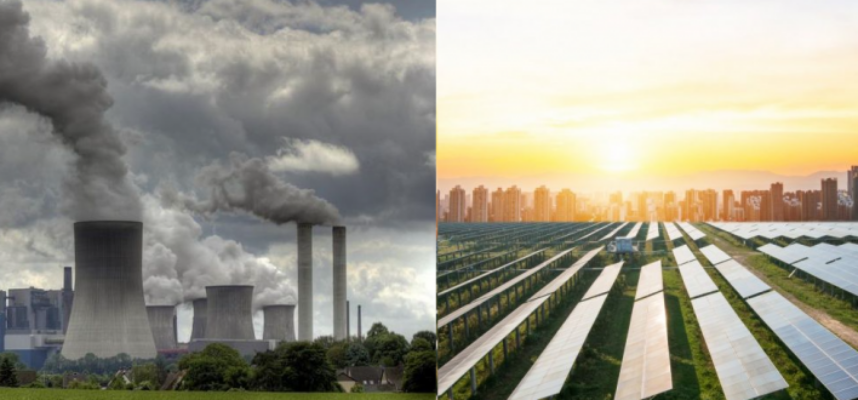
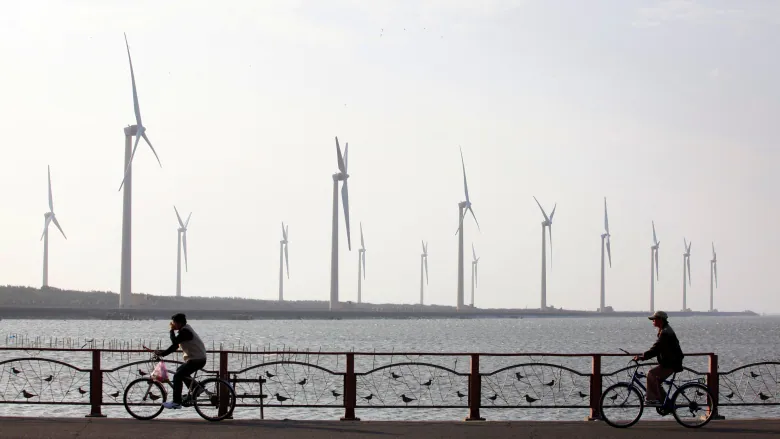
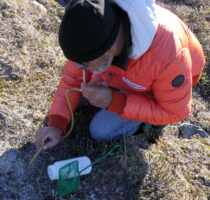
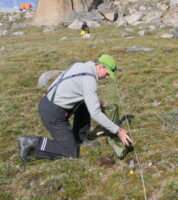


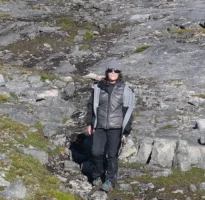













 In a
In a 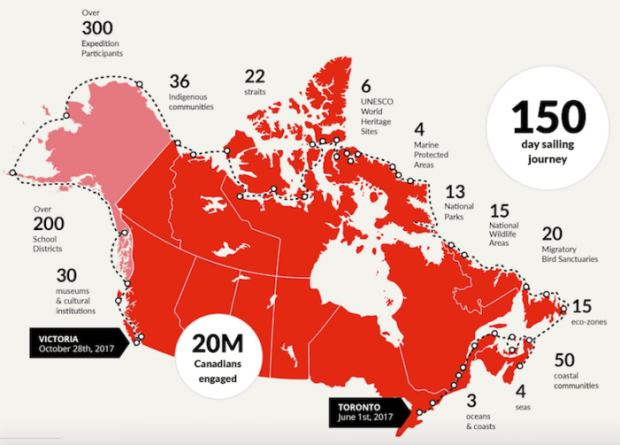











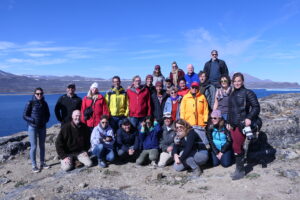








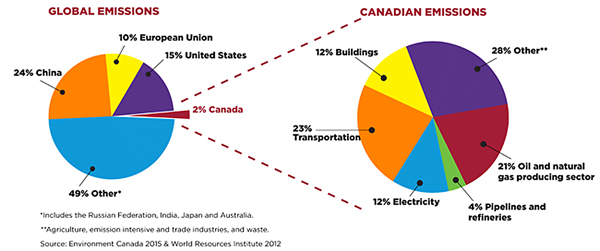

 Bill Gates, partly at the instigation of Warren Buffet who added his personal fortune to that of Gates, left Microsoft, the company he built, to dedicate his life to innovative solutions to large world issues such as global health and world literacy through the
Bill Gates, partly at the instigation of Warren Buffet who added his personal fortune to that of Gates, left Microsoft, the company he built, to dedicate his life to innovative solutions to large world issues such as global health and world literacy through the  Started by Paul Brainerd, Seattle-based
Started by Paul Brainerd, Seattle-based  Jeffrey Skoll, a Canadian-born billionaire living in Los Angeles and an early employee of
Jeffrey Skoll, a Canadian-born billionaire living in Los Angeles and an early employee of  Waterloo’s own Mike Lazaridis aims to transform our understanding of the universe itself by investing hundreds of millions of dollars into
Waterloo’s own Mike Lazaridis aims to transform our understanding of the universe itself by investing hundreds of millions of dollars into 
 In closing, kudos to the organizers for their sense of promoting the power of partnership in the arts. Just like in for profit businesses, this kind of pairing can build a powerful gestalt where the sum is greater thant the parts.
In closing, kudos to the organizers for their sense of promoting the power of partnership in the arts. Just like in for profit businesses, this kind of pairing can build a powerful gestalt where the sum is greater thant the parts.
 Proper Economic Stimulus Can Lead To …
Proper Economic Stimulus Can Lead To …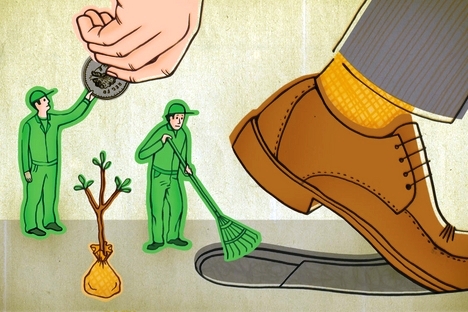 Significant Carbon Reduction
Significant Carbon Reduction

7 Oct 2021
0 CommentsTop 10 Ways to Slim Personal Consumption
When all of our personal consumption is added up, that segment may well be the largest single part of our personal carbon footprint. [In A Personal Carbon Reduction Plan, I tried to help individuals segment to ease the path to reducing personal carbon footprint.]. While there are many other components of personal consumption, especially our dietary choices, this focus are all areas where individuals can take action.
The old adage “Reduce, Reuse, Recycle” is still potent, and in that order. Our society has become so obsessed with <em>creeping consumerism</em> that it often obscures the cost to our planet. Reducing consumption is often about:
It is important to remember that excess packaging, which almost always involves huge amounts of single use plastics.
1. Bottled Water
A 21st Century paradox, is that people feel compelled to choose bottled water when ordinary tap water is almost always safer and healthier. Bottled water often has additives like fluoride and sodium. Even worse, a litre of bottled water contains over 10 particles of microplastic on average.
Polyethylene terephthalate (PET or PETE), the plastic used in drinks bottles makes up over 10% of all plastic production and represents a huge consumption of fossil fuels. And, we are unsustainably extracting water from finite aquifers setting the stage for future water shortages. If that weren’t bad enough, we are causing this plastic waste to pollute the farthest reaches of earth and the deepest oceans.
So, skip the purchase of that wasteful water, and drink from the tap whether at home or dining out. Nothing could be simpler. To do otherwise is an assault on the earth we call home.
2. Disposable Shopping Bags
In the US, consumers use 100 billion single use plastic bags, that require 12 million barrels of oil to manufacture, each and every year. A mere 14 bags consume the same oil required to drive one mile. Couple that with the toxic chemicals in the bags, and that they take 1000 years to break down, make them a wasteful indulgence we must curtail.
Although paper bags might seem the right alternative, they take 4 times as much energy per bag to produce.
Thus, the answer is reusable bags or ‘green bins’ for shopping. I’ve been using such reusable bags, since I bought my first cotton bag from Greenpeace in San Francisco in the 1980s.
3. Disposable Coffee Cups
Consider the 50 billion single use coffee cups thrown away in the US alone, and the 5 billion in Canada. Often described as a mountain of waste, that perhaps understates the scale.
What is more, almost all cannot be recycled, involve single use plastics (both the lid and embedded in the cup) and hence use loads of fossil fuels as part of our carbon footprint.
The solution is simple. No one is asking consumers to Reduce, or drink less coffee! However, the Reuse options are simple:
4. Disposable Coffee Pods
‘K-cups’ are expensive and bad for the Earth and your health. How did such expensive items become so popular? We are all susceptible to clever marketing, coupled with perceived convenience.
Earlier, I suggested one remedy to all those Disposable Take Out Coffee Cups was to make coffee at home. K-cups have made home coffee production wasteful as well.
There are many alternatives, from the timeless way people have been making coffee for decades without all the excess packaging, to biodegradable pods. A little research will find a way to lower this part of your personal footprint.
5. Overpackaged Take Out Food
TV shows like Big Bang Theory made take out food cool for Millennials. Personally, the lifestyle has always seemed unduly wasteful, with the COVID-19 pandemic rapidly accelerating this takeout and delivery trend. In terms of personal carbon footprint, take out meals consume 4.5 times the carbon of the alternatives.
This footprint comes from the extra transportation and the fossil fuel carbon embedded in all that excess packaging, primarily plastic.
Take time to consider the alternatives:
6. Drinking Straws
Plastic drinking straws are particularly problematic. Beyond being wasteful, and non-recyclable, and their use of fossil fuels in manufacture, these straws easily make their way to oceans, and are particularly harmful to wildlife.
You can obviously carry re-usable straws, often metal, for take out and also encourage any food establishments still using plastic to consider alternatives including wood, paper and even pasta.
7. Bar Soap
We can reduce our footprint from personal hygiene products. Liquid soap doesn’t last as long as good old fashioned bar soap, and involves lots of plastic made from fossil fuels for the container.
Bar soap comes in many forms, but generally has natural ingredients and is equally or more effective without the plastic waste. An added bonus: you can support smaller local businesses as you try out the many choices.
8. Bar Shampoo
Hair care products are over-packaged in lots of fossil fuel based single use plastic. We are ‘conditioned’ to believe that shampoo and conditioner comes as a liquid in a plastic bottle. Because the original shampoos were, in fact, bars, we are simply returning to a more sustainable model, coupled with well formulated products that are even better for your hair than the liquid kind.
Do your own research. Above is just one Canadian-made line of zero packaging products from an Alberta based startup. There are many more options. Give them a try and find the perfect choice for you.
9. Dishwasher Pods
Like the dreaded coffee pods, plastic pods for your dishwasher are an environmentally bad choice. Beyond the plastic packaging, they contain all sorts of chemicals that damage the marine environment and more.
Finding the most eco-friendly dishwasher tablets, powder, pods, and liquids. We also look at animal testing, microplastics, toxic chemicals, and give our recommended buys.
What to do? The old fashioned powdered dishwasher detergent has a way lower footprint. And, if you are diligent, ‘tablets’ are an even better choice with lower weight and the convenience of pods, but at a somewhat higher price.
10. Diapers
There is much debate about the over 50 billion diapers disposed each year in the US. The environmental footprint may include toxic chemicals, use of fossil fuel-based plastics, but perhaps the biggest is that disposing of diapers in landfills itself contributes significantly to our overall Greenhouse Gas emissions, from the methane produced.
Evaluate the pros and cons of alternatives, from reusable cloth diapers to biodegradable diapers. Do your research and find the lowest environmental footprint that will work for you.
This top 10 list, contains a fulsome menu of ways to start lowering your personal footprint by reducing packaging, particularly fossil fuel intense single use plastic.
You can start by selecting just one from the above list, or go all in. The most important thing is that there is no better time to start reducing your carbon impact than today.